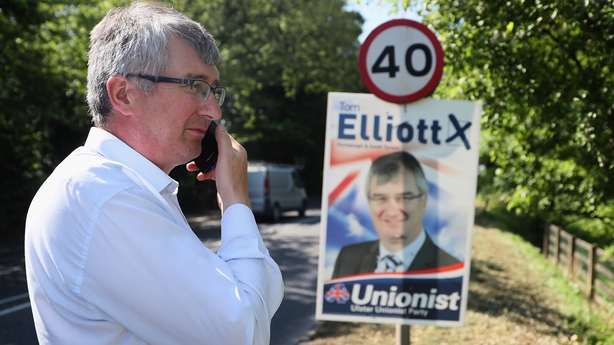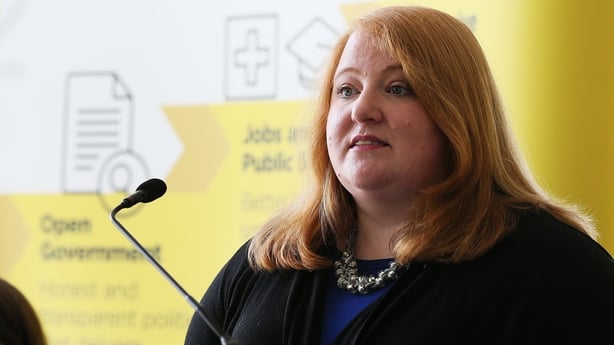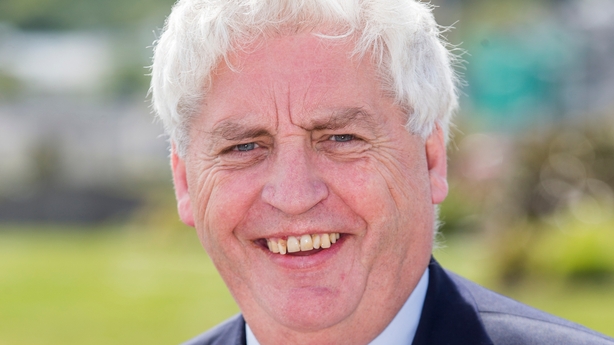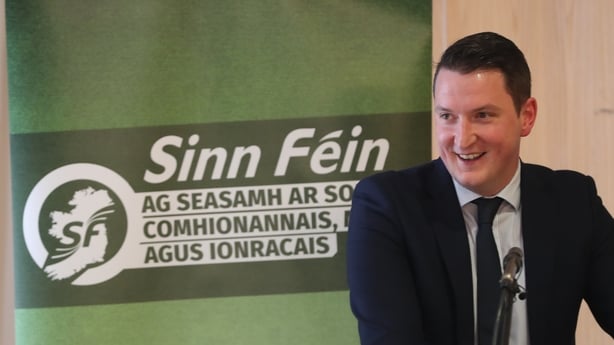The surprise UK general election sees voters in Northern Ireland off to the polls again for the second time in three months – and their seventh since 2014.
Voter fatigue? Not so you would know it, writes Mark Duncan.
The Assembly elections of March this year delivered a turnout of 64.78%, the highest since the Assembly election that followed the Good Friday agreement of 1998.
Of course, that’s not all it delivered.
This year’s snap Assembly election also produced a shock to unionism by shrinking the DUP lead over Sinn Féin to just 1,200 votes. "The notion of a perpetual unionist majority has been demolished," Gerry Adams remarked in the election's aftermath.
But the voting patterns of March will not be automatically repeated in June, not least because the two elections run on very different lines.
Assembly elections are multi-seat contests involving a system of proportional representation.
By contrast, this general election involves single-seat contests decided on a first-past-the-post basis.
So where should we look to see signs of political movement or change? Tomorrow’s election sees 18 seats up for grabs across Northern Ireland, but the main focus of interest will be on a small number of constituencies, where the winning margins are expected to be particularly tight.
Here are four to keep an eye on as results are being declared in the early hours of Friday morning.
Fermanagh & South Tyrone

This was the closest Northern Ireland contest in 2015. Predictably so. After all, this is a constituency where Westminster elections have been reduced to straightforward battles between orange and green.
Last time out, the DUP opted to stand aside to allow the UUP’s Tom Elliott to take the challenge to Sinn Féin, whose candidate Michelle Gildernew had held the seat since 2001, remarkably retaining it by a wafer thin four votes in the 2010 election.
The strategy worked. Fermanagh-South Tyrone fell to unionism with Mr Elliott, a former leader of the UUP, nosing ahead of Ms Gildernew by just 530 votes.
Speaking in the moment following his 2015 victory, Mr Elliot defiantly declared that the "most westerly constituency in the United Kingdom" was "not a green constituency". Nor, he added, did it "belong to Bobby Sands".
Both Mr Elliot and Ms Gildernew are again contesting in this election with the outgoing UUP MP aided once more by an absence of competition from within unionism’s main ranks.
Expect this constituency to stay true to recent tradition: this is a count that will run long and whoever emerges in front, it’s sure to be by only a slender margin.
Belfast East

Naomi Long is aiming to regain the seat she lost to the DUP's Gavin Robinson in 2015. The Alliance Party leader had previously – and sensationally – ousted DUP leader Peter Robinson, then in the midst of a personal and political crisis, in the 2010 election.
Gavin Robinson (no relation of Peter’s) boosted the DUP vote by 16.5% in this constituency in 2015, but he did so in the absence of a competitor from the UUP, the party having stood aside as part of a four-seat electoral pact with the DUP.
On this occasion, Mr Robinson will not be facilitated by the UUP who are standing the relatively low profile councillor, Hazel Legge. Mr Robinson will not be seriously challenged by Ms Legge, but her very presence is sure to draw votes from him in a contest which may well be decided by tactical voting from the supporters of other parties.
Ultimately, it will come down to a choice between Ms Long and Mr Robinson, two candidates who were vocal on opposing sides of last year’s Brexit debate in a constituency which divided almost equally between ‘Leave’ and ‘Remain’ – the Leave side winning by less than 1,000 votes.
Belfast South

On the evidence of the March Assembly elections, this is Northern Ireland’s most politically diverse constituency, having returned five MLAs from five different parties – the first and only constituency to have done so.
The Westminster seat here has been occupied since 2005 by the SDLP’s Alasdair McDonnell, but he retained it in 2015, then as party leader, by winning less than a quarter of the first preference vote, the lowest ever winning proportion for a UK election.
The tightening of Mr McDonnell’s margin of victory owed much to the decision of Sinn Féin, having stood aside in 2010, to compete with the SDLP for the nationalist vote.
They will do so again in 2017, and again their candidate will be Máirtín Ó Muilleoir, who served in the high profile role of finance minister in the last NI Executive and who topped the poll in Belfast South in the recent Assembly elections.
The prospect of a split nationalist vote opens opportunities for others, in particular the DUP, who trailed Mr McDonnell by just over 900 votes in 2015.
Belfast North

Sinn Féin is targeting a first-ever nationalist seat here, keen to reap an electoral dividend from shifting demographics that saw this constituency deliver three of the five available seats to nationalist parties in the recent Assembly elections.
To unseat the DUP’s Nigel Dodds would be a stunning achievement, however. Mr Dodds has been the MP here since 2001 and his chief competition in that election – and in each one since – came from Gerry Kelly of Sinn Féin.
Mr Kelly trailed Mr Dodds by 6,400 votes in 2001 but had narrowed the gap to just 2,200 votes by 2010. Five years later, in 2015, the margin had widened again to 5,326, helped by a unionist electoral pact which saw the UUP stand aside in Belfast North, which it is doing again in 2017.
However, Sinn Féin’s standard-bearer on this occasion is not Mr Kelly, but the human rights lawyer John Finucane, the youngest son of solicitor Pat Finucane, who was murdered at the family home by a loyalist gunman in 1989.
Now 37, John Finucane, a former Antrim GAA goalkeeper, is expected to broaden Sinn Féin’s appeal among more middle-class nationalist voters, his prospects boosted by the SDLP’s decision to run their press officer Martin McAuley as their candidate.
So low is Mr McAuley’s profile that he has been dismissed by some commentators as being no more than a "card candidate", a charge he has understandably rejected.
Ultimately, though, this constituency contest is being framed as a head-to-head between Mr Dodds and Mr Finucane, which may help the incumbent in galvanizing support from across unionism.

